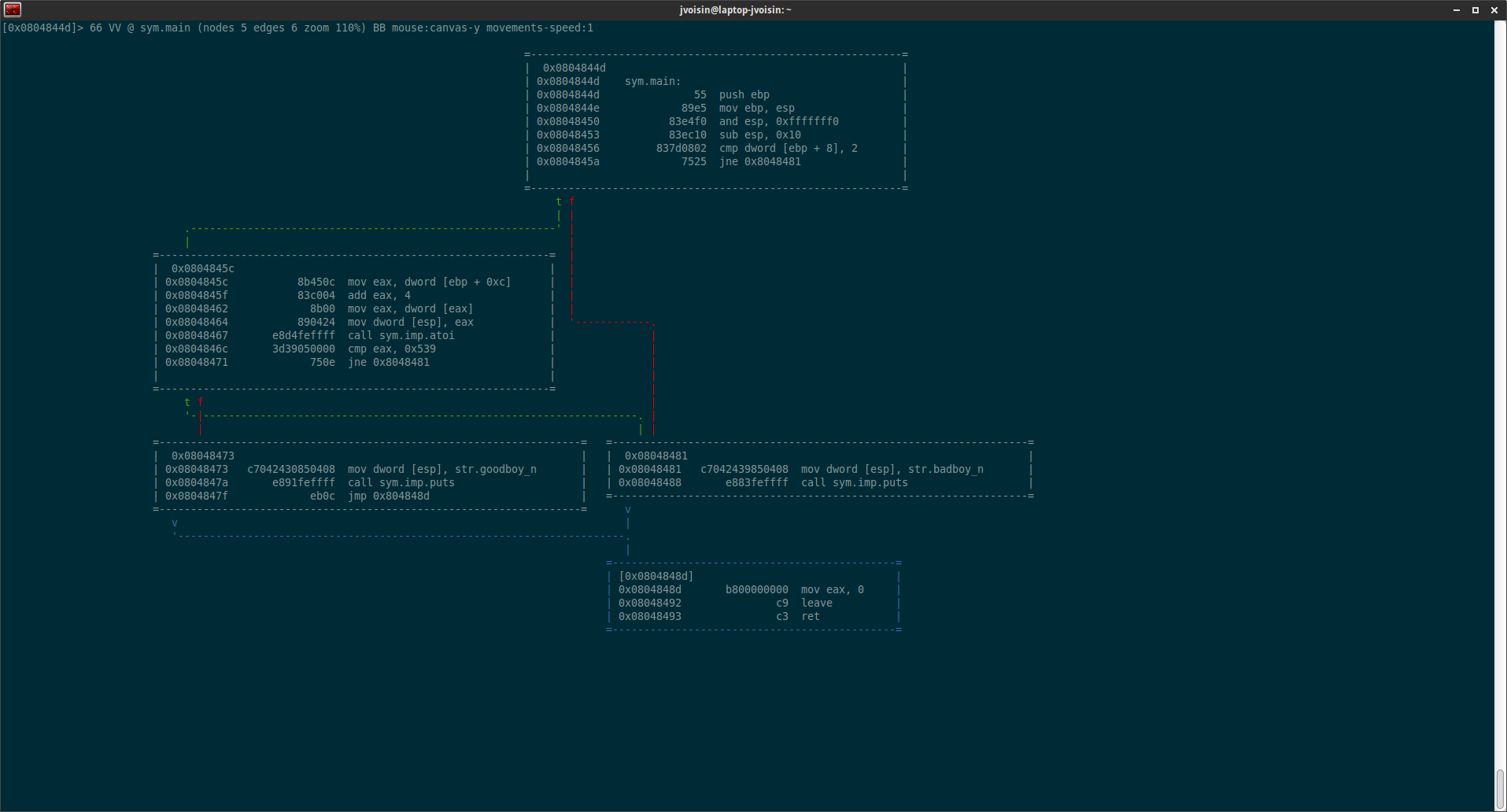Interview of ret2libc
July 16, 2015
Almost one month since our last article, time flees. This article is an interview of a new contributor, that greatly enhanced one of the most visually impressive feature of radare2, the one that our propaganda department contributors loves to show at conferences!
- Who are you ?
Hi, I’m ret2libc, I was an IDA addicted and this is my 10th day that I don’t use IDA.
- Hi ret2libc
Just joking, I still use IDA, but I’d really love to switch in the future, when r2 will be good enough. I am a Computer Science student, I like security related stuff, RE, malwares and… CTFs!
- Why contributing to radare2 ?
Just use IDA instead, like everyone else.
Well, there are just plenty of bugs to fix and it’s really fun. r2 is not perfect (yet), but it’s an opportunity to be involved in a very good project and full of anal nice people. Also, I was really annoyed by the fact that I have to switch to Windows or a Windows VM everytime I just want to analyze a binary, even a simple one.
Instead r2 works almost everywhere, I just need my terminal. It’s free, it’s cool and it can be a good enough tool to work with binaries from some CTF.
So, let’s try it, but… wait, there’s only plain disassembly here, where is my graph?? Ok,
VVand, well, I’ve found what I wanted to improve ;)
- You have fixed a big pile of bugs regarding graphs, that’s pretty impressive. Do you have a strong background in programming/maths ?
Let’s say I have a background in programming/maths. As I mentioned, I’m a Computer Science student.
- Why the graph?
I think it’s one of the fundamental feature a disassembler should have. It makes you understand at a glance what’s going on in a program and many times it’s the only thing I need from IDA.
- What are you currently implementing ? Someone told me about colours in graphs.
I’ve just finished implementing an algorithm to have a better layout for the nodes of the ASCII-Art graph, so that you won’t have anymore (at least, you shouldn’t) overlapping nodes or nodes placed in really wrong positions. Don’t expect IDA’s graph, but it’s already something ;)
Since, at the moment, you can only see one function in the ASCII-Art graph, currently I’m implementing a way to move between called functions and go back and forth between them, without having to leave the graph mode. Something like what you get in Visual Mode with
[0-9]shortcuts (#2907).
For the colours in graph, I think you will have to wait a little bit. In the meantime, if you feel brave you can start to use ‘VV!’, but don’t say I didn’t warn you.
- What is the plan for the next months ? Are you going to continue to work on r2 ?
Of course I will continue contributing to r2, in my spare time! I’m planning to focus on graph, as I’ve done lately. In particular I think you will see:
- issue #2907 fixed: move between called functions with [0-9] keys
- enhancement in the edges layout. They are a real mess at the moment and for a good enough graph it’s one of the fundamental thing that has to be fixed.
- mouse support for node selection
- last, and also least :P, you will see colored disassembly in the graph, unless someone else want to implement it before me (you are welcome!!)
- a lot of other cool stuff, but that’s another story and everything else really depends on having a good and strong starting point.
- What about, a GUI ?
What? GUI? Pff, we just have the terminal :)
Really, I’d really like to see a cool GUI for r2, but don’t count on me.
- Most hated/lover feature of r2 ?
- Most hated feature:
anal.hasnextset to true as default!- Most loved feature: ASCII-Art graph, of course ;)
- Advices for new contributors and users ?
Contributors, just focus on something you’d like to be present in r2 and implement it, maintain it and add tests!!
Users, keep using IDA, unless you want to take the red pill and see how deep the rabbit-hole goes ;)
- Last word ?
Maybe we will see r2 1.0 in the future! VVRRRRRRRRRRRRRRRRRRR
- Screenshots ?
 Example of graph
Example of graph
 Disassembly in graph, without colours (yet)
Disassembly in graph, without colours (yet)